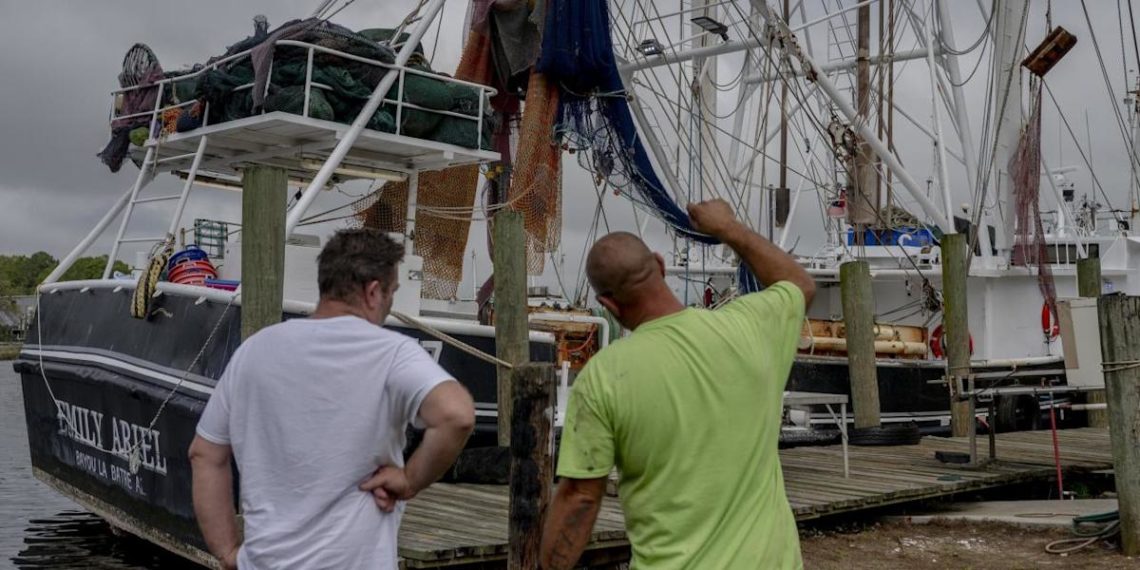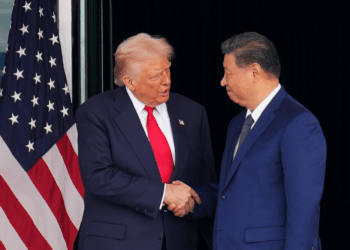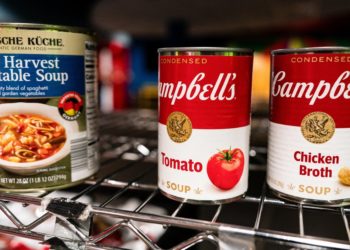BAYOU LA BATRE, Ala.—Investors are losing trillions. Corporate leaders are sweating. Consumers are stockpiling. But in a tiny bayou town dotted with marshes, the shrimpers are celebrating President Trump’s tariffs.
“When I saw the announcement, I could hardly believe it at first,” said Jeremy Zirlott, a commercial shrimper in town. “It seemed too good to be true.”
Trump’s sweeping new tariff regime unveiled last week includes the countries that export most of shrimp Americans consume. That includes rates of around 26% on India, 10% on Ecuador, 32% on Indonesia and 46% on Vietnam.
In Bayou La Batre and small shrimping towns like it, the economy has cratered in recent years on the back of a deluge of cheap, farmed shrimp. Fishermen unable to sell their shrimp to break even on gas, labor and supplies have had to tie up their boats. Supply shops, seafood processors, marine technicians and others in the industry have suffered, too.
More than 90% of the millions of pounds of shrimp consumed annually in the U.S. is imported, according to the Southern Shrimp Alliance, based on an analysis of data from the U.S. International Trade Commission.
Even at its height, the shrimping industry represents a fraction of America’s economic output. Its revival is hardly enough to make up for the demise of the auto industry, for instance, which has a big footprint in the South. Yet for this coastal corner of Alabama, the industry dominates its fortunes.
In Bayou La Batre, when the shrimping industry suffers, so does the entire town. Income and sales-tax revenue plummeted around 40% between 2021 and 2024 alone, according to Mayor Henry D. Barnes.
“People were looking to me for answers, and I didn’t have them,” said Barnes, who is 62 years old. “The city can’t put tariffs on foreign seafood.”
After Trump won re-election, Barnes sent him a letter pleading for tariffs on imported shrimp. “The apostles were mending nets when Jesus approached them,” he wrote.
He felt that the president’s announcement of sweeping tariffs on some of the biggest shrimp exporters was the answer to his prayers.
“We could come back the way it used to be,” Barnes said.
Since the first commercial fishermen arrived in town in the 1700s through as recently as 2021, Shell Belt Road along the bayou was awhirl with preparations for the start of the fishing season around this time of year. Lines of trucks carrying trawl cable, netting and packing materials were clogging the road while boats of every size moved up and down the bayou going to fuel docks and shipyards. In the background would have been the constant hum of predictions between captains and crew members on what the coming season would bring.
“You couldn’t hardly walk across the street waiting on traffic,” said Barnes, who runs a struggling net shop when he isn’t overseeing city business. “Now, you could pretty much crawl across it, because there’s nothing going on.”
A sense of cautious optimism radiated this past weekend from the tiny Gulf inlet of around 2,204, locally famed for its connection to the hit movie “Forrest Gump.” (In the movie, Bubba, Forrest’s best friend and fellow Vietnam soldier, is from Bayou La Batre and dreams of opening a shrimping business.)
From the line out the door at the Bayou Seafood Company restaurant to the busier-than usual-scene on Shell Belt Road, residents said they felt hopeful for the first time in years.
Zirlott, 52, said he can trace an uninterrupted line of commercial fishermen through his local family ancestry going back to the 1700s, but he nearly had to call it quits last year after he couldn’t turn a profit on his hauls.
Growing up in town, Zirlott remembers parents coming into the local high school in May asking teachers to move up final exams so that their children could be ready to go out on trips and help with scutwork like cleaning out the fish holes on the boats. Zirlott went on his first shrimping trip when he was 6 years old, never wavering from the job that, for years, required him to spend 280 days a year at sea.
“I pity people that go through life and don’t get the excitement of a big catch,” Zirlott said.
Some of Zirlott’s competitors went out of business around 20 years ago, when imported shrimp started to become a bigger problem. He snapped up a handful of docks and invested in packaging equipment onboard his vessels so that he could sell directly to wholesalers, rather than through a middleman. Zirlott marketed his shrimp as higher quality and better-tasting than imports.
“It worked OK for a lot of years, and I grew,” he said.
In 2021, that changed as import prices dropped sharply, making it much more difficult for domestic shrimpers to turn a profit. In 2023, domestic shrimpers operated at a net 3.7% loss on average, according to the U.S. International Trade Commission. (In 2021, they made a 5.1% profit.)
“I wound up with more product in the freezer than I ever had,” Zirlott said. (By the end of 2023, he was sitting on around 500,000 pounds of frozen shrimp, or the contents of four commercial freezers piled to the ceiling.) He struggled to afford needed maintenance and repairs on his three boats and watched as, one-by-one, many of the 200 or so commercial shrimping vessels in town stopped sailing.
Imports drove down the price of a pound of shrimp to as low as $1.50 for some varieties, from $3.03 in August 2021, at the same time the costs of diesel fuel and supplies surged.
In Chauvin, La., Faith Family Shrimp Co. decided to sell all five of its steel-hulled shrimping boats, pivoting to focus primarily on processing. “The boat would come in with a full load of shrimp and we wouldn’t even make enough to pay the crew,” said Angela Portier, who owns the business with her husband. “The fishermen had worked so hard. It’s blood-sweat-and-tear money.”
Last week’s tariff announcement was the first time she felt hopeful that they would be able to keep the business going strong. “It could give us a levelized playing field,” said Portier, 46.
Still, even with tariffs, commercial fishermen are facing challenges.
Shrimpers rely on imports for a lot of their supplies. Zirlott buys some of the webbing for his nets from India—which runs around $22,000 each year for each of his boats—and cables from Korea, since many local suppliers have gone out of business. He knows those prices will likely rise, “but we can overcome it if we have increased shrimp prices.”
James Anderson, a professor of food and resource economics at the University of Florida, said increasing shrimp prices might not help as much as fishermen think it will in the long term. “Demand is going to suffer as people become less likely to eat out and buy premium products like shrimp to eat at home,” he said.
Southern Shrimp Alliance spokeswoman Deborah Long said that since the pandemic, wholesale shrimp prices for shrimpers have fallen to record lows, while retail shrimp prices for consumers have remained historically high. “There has been a huge disconnect in the market,” Long said. “I think shrimpers are hoping that gap will be corrected.”
On Saturday, Capt. Michael Robbins was loading rope, soap, deck wash and groceries onto one of Zirlott’s three boats, the 98-foot Patricia De-Anne, in preparation for a coming 35-day expedition in the Gulf. Last year, the 49-year-old said, he earned around $8,000 total for all three trips he worked. The year prior, he earned that much or more per trip for each of the 10 he worked.
Worried about losing his house and car, he looked for odd jobs and tried to find work in auto body fabrication, but found that even those businesses were struggling.
“We hit rock bottom,” Robbins said. “So I’m ready to go back up.”
Write to Rachel Wolfe at [email protected]
The post In a Tiny Gulf Town, Big Cheers for Trump’s Tariffs appeared first on The Wall Street Journal.




